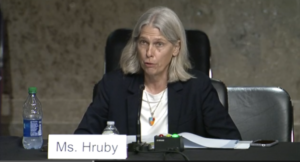
The Senate on Thursday confirmed ex-Sandia National Laboratories director Jill Hruby as the sixth administrator of the Department of Energy’s National Nuclear Security Administration. The vote was 79-16. The semi-autonomous National Nuclear Security Administration (NNSA) is the part of the Department of Energy responsible for nuclear-weapons maintenance, refurbishment and testing. Hruby is the second woman to lead the agency. Lisa Gordon-Hagerty, the last full-time administrator, was the first. Hruby spent more than 30 years working at Sandia, holding positions in…

 By
By 











